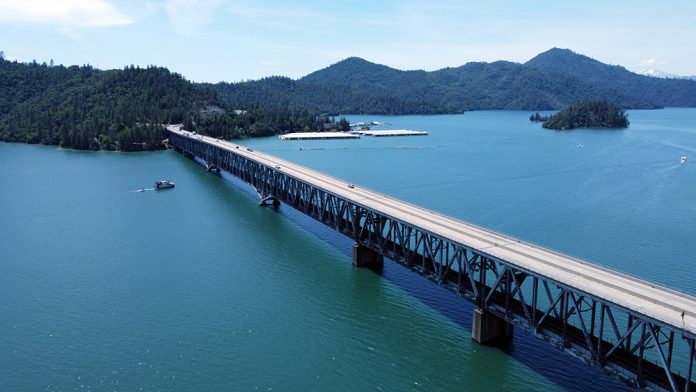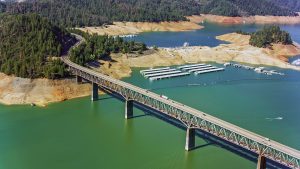
October 1 marked the beginning of the new water year in California. And while 2023 provided an abundant amount of water, anyone who lives here knows we can’t assume 2024 will be the same. In fact, the only thing we know for certain is our water supply is utterly unpredictable. California’s droughts and floods have always been cyclical, but it is never certain when that cycle will shift. While this pattern has not changed, unfortunately neither has the way we deal with our variable water supply, and it very much needs to.
All of California must share our available water, not just farms, families and businesses but the environment and wildlife as well. Unfortunately, many of the rules governing water distribution are outdated and do not utilize current science. What they do is attempt to pick winners and losers, and the result is often we all lose.
Let’s look at the Sacramento Valley as an example. The Sacramento Valley has a deep connection between the urban and rural areas that is reflected in Sacramento’s designation as America’s ‘Farm to Fork’ capital. This fertile region of the state grows rice, almonds, prunes, tomatoes, olives and more. According to 2021 data, over half a million acres in the Sacramento Valley produce nuts, contributing $1.6 billion in revenue to the state’s economy. Its rice fields also provide a critical winter stop along the Pacific Flyway for migrating waterfowl.
A year ago, 95% of the rice land in the Sacramento Valley’s Colusa County lay barren, producing nothing but dust, widespread unemployment and an economic crisis. Farming had all but stopped in the region and the impacts on the economy were clear: $1.3 billion in lost economic activity, 14,300 lost jobs, $732 million in lost labor income and devastated supply chains.
Yes, 2022 was a very dry year, but the devastation inflicted on the Sacramento Valley could have been minimized if the rules regarding water flow were governed by a more updated approach. Narrowly focused rules dictated that water supplies for farms be withheld apparently to provide sufficient cold water to protect salmon in the Sacramento River. However, routinely taking that water away from farms and keeping it in the river has failed to deliver the rebound in salmon population we were told to expect.
The reasons for that failure are simple, and they are based on current science. Salmon need things other than water to thrive. They need habitat, not rock-lined channels, and a place to rest and grow. They need the safety of passage to the ocean, protected from non-native predators and access to a food supply on their journey. And they need water within a range of safe temperatures similar to what nature delivered on its own in the past.
By depriving farms of water in a critical year, local economies were devastated and yet those efforts also failed to benefit fish. This lose-lose dynamic could be avoided if we took a more holistic approach to managing water.
Innovative projects throughout Northern California that consider the entire ecosystem are having a remarkable impact on salmon survival and proving there is a better way.
Public water agencies, federal and state governments, environmental groups and individual growers are investing in projects like the Butte Creek Salmon Restoration Project that helped salmon numbers rise from a few hundred fish in the 1990s to over 10,000 per year today. On the Sacramento River, Painter’s Riffle is a project that restored a side channel, giving fish a place to rest, eat, and hide from predators on their journey to the ocean.
In addition to updating our water management system, we must prepare for future droughts by capturing water during wet years, like the one we had this year, and saving it for the inevitable dry years on the horizon. We need facilities to store water and to do so in ways that deliver water to people in cities and towns, growers who produce our food and for the environment.

The development of Sites Reservoir presents an opportunity to alleviate some of these challenges by capturing and storing excess winter runoff that would otherwise be lost to the ocean. With a storage capacity of up to 1.5 million acre-feet, Sites Reservoir in Colusa and Glenn counties offers a substantial boost to California’s water infrastructure, ensuring a more resilient water supply system.
In 2023, if Sites Reservoir had been constructed, it could have saved 700,000 acre-feet more water for the future. Many projects like this have been on the books for years and are still far from completion. Specifically, Sites has been in process for more than 30 years.
There is broad support for Sites Reservoir, but it is still almost 10 years away from entering service. Sites Reservoir is eligible for approximately $875 million in Prop 1 funding, passed by voters in 2014, and the largest share of the eight successful applicants. Much must be done to finalize permitting and then build the project, but it is critical it moves forward without further delay, allowing it to be online in 2032.
It is possible for farms, families and the environment to not just co-exist but support each other by looking at the ecosystem as a whole, working to take advantage of water when Mother Nature supplies it and implementing policies that focus on sustainability for all. And the Sacramento Valley is proof that a better approach is possible.















